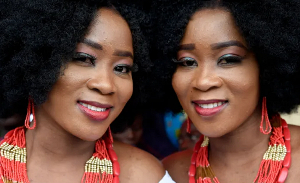Opinions of Friday, 10 November 2023
Columnist: Simon Badu
Understanding hair loss during chemotherapy: A common side effect with a silver lining
Although the medical world has made incredible progress in treating cancer, many people and their loved ones still battle the disease. The side effects of these treatments can be quite concerning. Hair loss is one of the most obvious and emotionally draining side effects of chemotherapy, and it frequently happens during treatment.
This piece will examine coping mechanisms for this challenging part of cancer treatment as well as the science underlying hair loss during chemotherapy.
One typical adverse effect of chemotherapy, which is intended to target and kill cancer cells, is alopecia, or hair loss. Chemotherapy is an effective tool in the fight against cancer, but it does not distinguish between diseased and healthy cells.
Because of this, hair follicles—some of the body's cells that grow the fastest—are also impacted. Chemotherapy weakens and eventually sheds hair by interfering with the cell division process.
The kind and dosage of chemotherapy medications used, as well as individual factors like heredity, can all affect how much hair is lost. While some people may only have modest hair thinning, others may completely lose their hair, including their eyelashes and eyebrows.
Hair loss can cause psychological issues for a lot of cancer patients. Our identities are frequently linked to our hair, so losing it can serve as a physical reminder of our disease. It's important to keep in mind, though, that hair loss brought on by chemotherapy is typically transient. After treatment is over, hair usually starts to grow back, and it frequently does so with a new texture or color.
While dealing with hair loss during chemotherapy can be difficult, there are a few techniques that can support people in keeping their confidence and sense of self-worth:
Head coverings: To preserve their appearance during treatment, a lot of cancer patients choose to wear hats, scarves, or wigs. These are frequently offered for free or at a discounted price by neighborhood organizations and cancer support groups.
Adopt the natural look: Some people decide to accept their baldness as a characteristic of who they are. Positivity and self-assurance can empower greatly.
Scalp care: Taking proper care of your scalp will help create a favorable environment for hair growth. It is crucial to use mild, fragrance-free products and shield the scalp from the sun.
Support and counseling: Ask friends, family, and support groups for emotional assistance. Counseling services are provided by several cancer hospitals to assist patients in overcoming the psychological difficulties of therapy.
Hair regrowth care: Seek advice from medical professionals regarding substances that may promote hair health and hair regrowth care following therapy.
Patients with cancer must realize that hair loss is a transient side effect of chemotherapy. After undergoing therapy, hair usually regrows in a matter of weeks to months. Though the new hair may differ in thickness, color, or texture, it represents a new beginning and a step in the right direction for healing. A tangible reminder of the fortitude and resiliency of cancer patients undergoing treatment is hair loss after chemotherapy. Although accepting the changes can be
emotionally taxing, there are several strategies for doing so.
When undergoing chemotherapy, people may experience hair loss. However, with the support of friends, family, and medical experts, they may keep their self-esteem and look forward to the day when their hair grows back—a sign of hope and regeneration.













